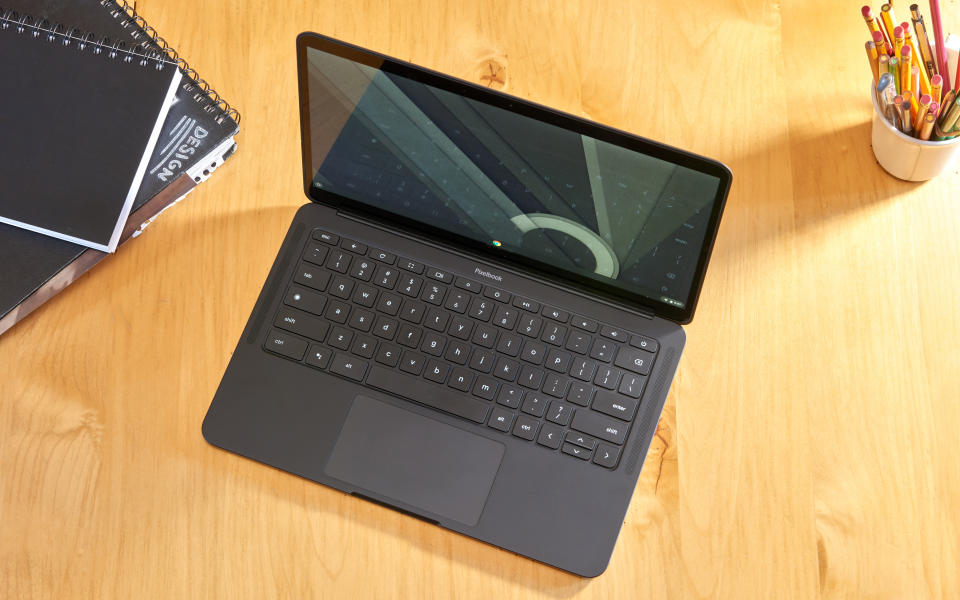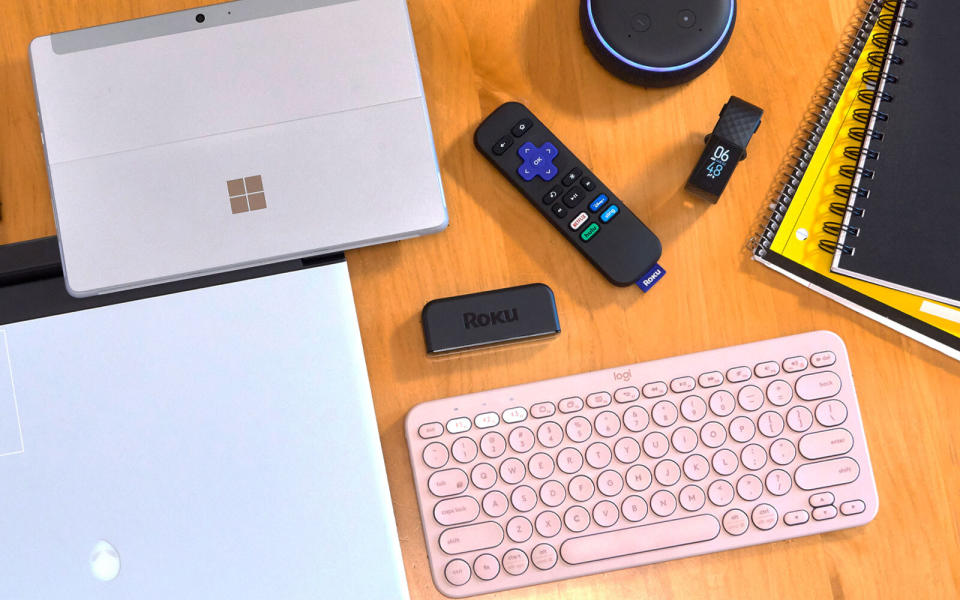How to buy a laptop for school
Choices abound, but get ready to do more research.
For the most part, our recommendations for buying a laptop for school this year aren’t very different than last year’s. But of course, the COVID-19 epidemic throws a major wrench into daily life. It's still unclear when public schools and colleges will reopen, and there's a good chance they'll have to shutter their doors in the future to manage any flare ups.
No matter what lies ahead, your student life will still center around your laptop, whether you’re attending remote classes, working on reports or wasting time researching on the web. And don't forget to leave a bit of room for fun: You'll also want a device that'll be great for streaming video and maybe playing the occasional game or two. The big difference this year? You're going to need to do a lot more research ahead of time since there's a good chance you won't be able to test many notebooks in person.
For most people: Ultraportables are better than ever
The days of slow and restrictive ultraportables are long gone. Now, thanks to better processors, faster storage and refined designs, you can get a thin and light laptop that'll easily keep up with you for years. If you've been following Engadget closely, none of this should be a surprise. Ultraportables like Dell's XPS 13, HP's Spectre x360 and Apple's 13-inch MacBook Pro have been some of our most well-reviewed devices. (And personally, even though I love having access to a powerful desktop at home, I still spend most of my time writing on slim laptops. I can't exactly take my rig to the park.)

Last year, we were waiting for the arrival of Intel's 10th-generation processors, which promised faster speeds, more power efficiency and vastly improved graphics. Those CPUs are widely available now, so you can even get a bit of basic gaming done on a slim machine. But things are even more interesting in 2020 thanks to AMD's new Ryzen chips, which deliver even better multi-core performance and graphics power than Intel's hardware. While AMD laptops used to be relegated to the bargain bin, now they include impressive options like the 15-inch Surface Laptop 3 and ASUS's ROG Zephyrus G14.
It's also worth taking a close look at convertible ultraportables, like the Dell XPS 13 2-in-1 and the aforementioned Spectre x360, which feature rotating screens at a slight premium. They can be used as enormous tablets, but realistically you'll likely just turn those screens around to watch Netflix in bed. These machines are now as light as normal clamshells, and they're a bit more versatile for anyone who wants to get their keyboard out of the way. They also typically support styluses, which could be useful for jotting down notes or doodling.
Ultraportables — what to look for:
Intel's 9th and 10th-gen CPUs, or AMD's Ryzen 4000 line. (Avoid anything more than two years old, if you want your computer to last for a while).
8GB RAM minimum, 16GB RAM ideally. (If you're considering 32GB, you may want to look at a gaming or productivity machine.)
512GB minimum SSD, 1TB if you can swing it. (You'll start to feel the limits of a 256GB drive within a year.)
10 hours battery life minimum.
Bright screens, thin bezels and, if you can afford it, OLED and HDR. Avoid 4K upgrades, as they’re not very noticeable on 13-inch screens.
For gamers: You’re spoiled with options
Last year, lighter gaming laptops (under 5 pounds) were all the rage. And, to be honest, not much has changed. Notebooks like the Razer Blade 15 and Alienware M15 deliver most of the power you'd expect from desktops just a few years ago. And unlike gaming notebooks of yore, they aren't a chore to lug around (remember, these things used to weigh upwards of 10 pounds!).
Unlike ultraportables, which usually have 13-inch screens, gaming notebooks typically offer 15-inch displays. Even though they're just a few inches larger, those screens do a better job at immersing you in whatever you're playing. And if you don't mind a few more pounds, 17-inch screens are still around.
I'd think extra hard before looking at the few 13-inch gaming notebooks though, like the Blade Stealth. It's an impressive machine, but it's woefully expensive and only slightly lighter than the more capable (and often cheaper) Blade 15. A better alternative is ASUS's Zephyrus G14, a powerful (and surprisingly affordable) notebook that weighs just 3.5 pounds. It has a roomy 14-inch screen, and it's one of the first machines around to run AMD's new Ryzen 4000 CPUs.
Pay special attention to screen refresh rate in a gaming laptop. The faster it is, the smoother high-framerate gameplay will look. If you're getting a machine with a top-of-the-line GPU like NVIDIA's RTX 2080, you'll want the highest refresh rate you can get. And at the very least, get a 120Hz machine, which will give you a healthy upgrade from the standard 60Hz we're all used to.
Gaming — what to look for:
Intel's 9th and 10th-gen H-series CPUs, or AMD's Ryzen 4000 CPUs
NVIDIA's GTX 1650, GTX 1660 Ti or AMD's RX 5500M at the minimum
For more power, consider an RTX 2060 or 2070, especially if you want to spit out gameplay to a 4K set.
At least 16GB of RAM.
For multimedia students: Get more power
If you're aiming to edit video, music or do some serious 3D rendering, you'll need something more than a normal ultraportable. That's where the more powerful workhorse machines come in, like Dell's XPS 15 and the MacBook Pro 16-inch. Just like gaming notebooks, these typically come with larger screens and cases to fit in beefier CPUs and GPUs. But multimedia notebooks are less flashy, so they stand out less in a lecture hall or office, and they often come with more practical ports, like SD card readers and a plethora of USB connections.
Sure, you'll be sacrificing some portability by going for a larger multimedia machine, but the tradeoff is worth it. Every second you save rendering a project is time you can spend actually enjoying your student life. And having more power will also come in handy when you're working on bigger projects like feature-length films in 4K, where rendering can take several hours.
Multimedia — what to look for:
Intel's 9th or 10th-gen H-series CPUs, or AMD's Ryzen 4000 chips. In this case, the more cores the better.
At least 16GB of RAM, but consider 32GB if you can afford it. You can never have too much memory when dealing with massive files.
NVIDIA's GTX 1660 Ti or AMD's Radeon RX5500M at minimum.
At least 512GB of NVMe SSD storage, along with additional space for larger SATA SSDs.
All the ports you'll need to connect to accessories.
So what about Chromebooks and Microsoft's Surface tablets?
Chromebooks are incredibly popular in schools for a reason: They're often inexpensive, fast and don't need much upkeep. But they're also restricted to only using web apps, which isn't ideal if you need to run specialized software for your courses.
I'd consider a Chromebook to be a great secondary machine if you just want something small to travel with, while your more powerful notebook (or desktop) stays at home. As a primary laptop, Chromebooks are only a good choice if you’re certain you’ll never have to deal with multimedia apps. And even then, I’d recommend being cautious -- check out our Chromebook buyer’s guide for help. You never know how your course load may change in a few years. (Plenty of people change their majors, trust me!)
And as much as I enjoy Microsoft's Surface Pro machines, their small screens and slightly outdated designs (look at those bezels) won't age well over the next four years. The Surface Laptop 3 is a solid school notebook though, despite its chunky display borders. The Surface Book 2 could be a great choice too if you find it on sale, but I'd stay away from the pricey and under-powered Book 3.

How do I laptop shop during the pandemic?
Normally, I'd say you should try and get your hands on a notebook before you buy one. But these aren't normal times. While some stores may be reopening in the next few months, it's probably not the best idea to handle a computer that hundreds of other people have touched. (And if you really want to, wear gloves and be sure to disinfect afterwards.)
Most people would be better off trying to do as much research as they can online (perhaps with the help of a trusty gadget blog). Read as many reviews as you can, dive into YouTube hands-ons -- truly obsess over the notebook you want. And after all that, there's a good chance you'll learn if it's right for you. (If you need help with accessories, check out our tips from last year.)
When you're ready to buy, be sure you're purchasing from a store with an easy and generous return policy. This is one case where saving a few bucks from an eBay seller might end up costing you more in the long run.
Engadget’s 2020 Back-to-school buying guide

How to buy a laptop for school
The best laptops to use for schoolwork and gaming
The best study-from-home-essentials to keep you on track
The best gadgets for school under $50
The best student discounts we found for 2020
How to keep track of your finances as a student
The best organization apps for students
How to pick the best gaming subscription for you
All the gear you need to game-stream like a pro
The best headphones, speakers and audio gear for students
The best budget TVs and gaming devices for students
The best gear to help you stay fit during the school year
The best educational apps to stay sharp throughout the school year
